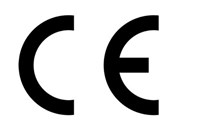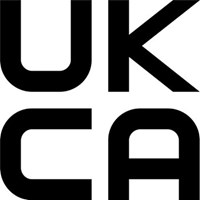CE marking after the EU Transition: The crucial changes you need to know
27 November 2020
Lots of things are changing after the EU Transition Period ends on 31 December 2020. One big change that is currently flying under the radar for many manufacturers is the use of CE marking on products. Manufacturing Advisor Andy Hinton unpicks the details and outlines what manufacturers need to do to prepare themselves for using the UK’s new ‘UKCA’ mark.
*This blog was amended in August 2021 following a government announcement to extend to the CE mark phase out deadline in Great Britain from 1 January 2022 to 1 January 2023
What is the CE mark?
From electrical equipment and toys to medical devices and PPE, the letters ‘CE’ are visible on a huge range of products traded on the single market in Europe. The CE mark is a mandatory requirement for many products to be legally sold in the EU and are subject to Essential Health and Safety Requirements laid down by EU Directives, Regulations and Standards. The requirements vary depending on the Directives and Regulations that apply to each product.

Why is it important?
The CE mark is a declaration from the manufacturer that they have ensured conformance with the relevant legal requirements for their product. If you manufacture a product that requires a CE mark, that means you have a responsibility to identify the regulations that apply, carry out a conformity assessment, set up and maintain a technical file, draw up a declaration of conformity (called a ‘DoC’) and then affix the CE logo to the product in the required format. Depending on the directive, some higher risk products also require testing by an independent third-party, or ‘Notified Body’.
However, CE marking is not just the responsibility of the manufacturer alone. If you’re distributing a product manufactured by somebody else, you are responsible for checking the presence of the CE mark and obtaining the necessary documentation.
Similarly, if you’re importing a product manufactured outside the EU, you are responsible for checking the manufacturer has taken the necessary steps and provided the right documentation. If you import or distribute a product which is then marketed under your own name, you take over the original manufacturer’s legal responsibilities.
It’s really important to get this right. If someone gets hurt by your product, for example, it will be up to a judge to decide whether you showed due diligence and have the correct technical documentation and testing in place to show conformity. Failure could lead to product recalls, fines and even imprisonment.
I’ve been involved in CE marking since the early 2000s, and when I was first trained in it as an engineer it was a big eye opener to see how much work it involved. You need to read through a mass of information, pick out the relevant directive and understand within that directive how your product is applied. I’ll admit it’s not the most interesting bedtime reading – but it’s essential.
What’s changing after the EU Transition Period?
From 1 January 2021, the UK will be introducing its own ‘UKCA’ (UK Conformity Assessed) mark for products being placed on the market in England, Wales and Scotland. The UKCA mark will apply to most goods currently subject to CE marking, and the requirements will largely remain the same. But there are some differences for certain products, so it’s important you closely read the relevant UK regulations for your product.

To gives businesses time to adjust to the new requirements, there is a transition period:
- From 1 January 2021: You can continue using CE marking for most existing products in Great Britain, providing they were either already manufactured before 31 December or any mandatory third-party assessment was carried out by an EU-recognised Notification Body. Products manufactured after December, for which any mandatory third-party assessment is carried out by a UK body and not transferred to an EU equivalent, will need to conform to UKCA immediately from 1 January.
- From 1 January 2023: The CE mark will no longer be recognised in Great Britain, so products will need to be UKCA marked. The UKCA mark must be affixed directly to the product during the manufacturing process, as is the case with CE marking.
There are separate rules for Northern Ireland. The UKCA mark will not be recognised here, so products will need to be CE marked or UK(NI) marked.
What about exporting/importing?
If you market your product in the EU, you will still need to use, and comply with, CE marking requirements and EU directives. In other words, products marketed in both Great Britain and the EU will require both the UKCA mark and the CE mark.
Additionally, if your product needs a third-party conformity assessment it will need to be delivered by an EU Notified Body, as UK bodies will no longer be recognised in the EU. Similarly, to market in the EU you will need an EU-recognised authorised representative (and vice versa for the UK market).
You will need to prepare for the additional time and expense of ensuring double coverage if your product is placed on both the UK and European markets, and if importing you need to make sure your supplier is adequately prepared as well.
It’s okay to be confused!
Got all that? Don’t worry if not! CE marking was already a minefield for many manufacturers, even before our exit from the EU came onto the horizon.
To clear up any confusion, get in touch and we can guide you through the steps needed to ensure compliance for your product.
The sooner you’re ready, the better. Leaving it until January 2023 could backfire if UK and EU legislation for your product diverges – if you CE mark your product based on rules that are different to the UK’s, it will not be recognised in the UK even before 2023.
Made for Manufacturing
Made for Manufacturing is our new support programme for leaders. Delivered entirely online, with virtual tours, expert speakers, peer-to-peer learning and one-to-one support from a specialist Manufacturing Advisor - to put you in the best possible position for the future.